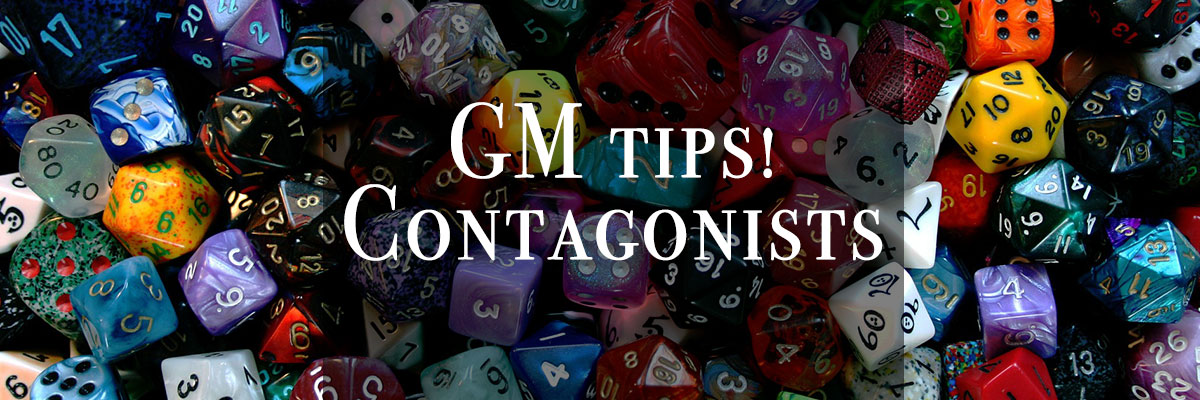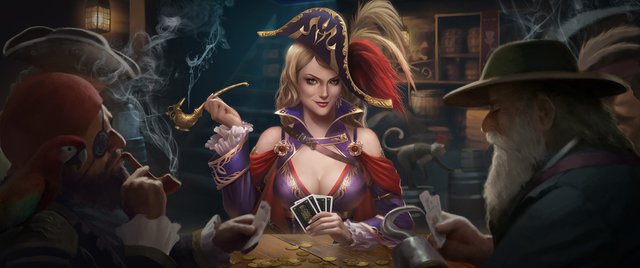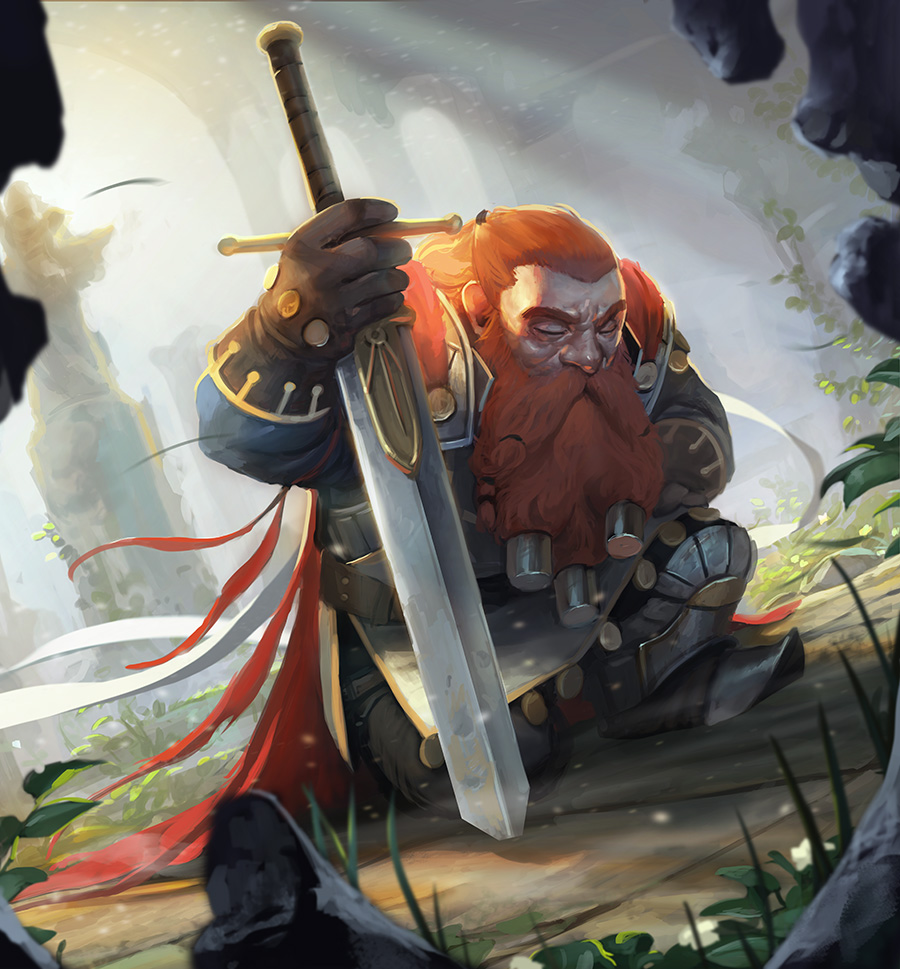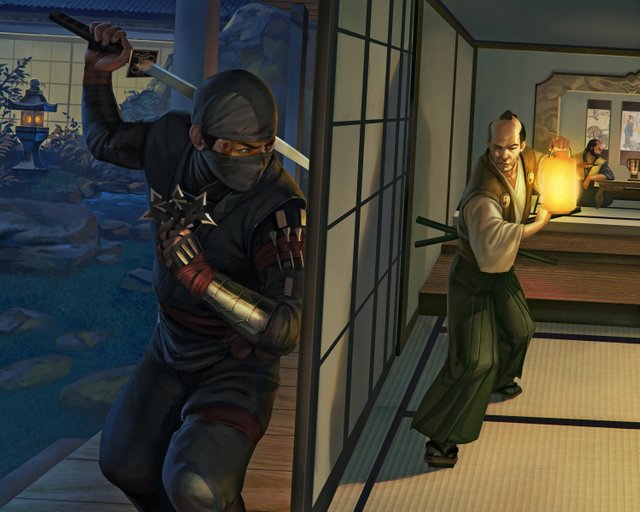Building Depth in Games: Contagonists

Without conflict, there is no story. And it is the antagonist in every great story that provides and drives conflict. As game masters, sometimes we struggle with making stories interesting for our players. After all it is one of our functions to be a storyteller. Stories deepen through conflict, and antagonists are an effective way to introduce dramatic tension to any campaign, even if they aren’t the “main bad guy”. The purpose of this blog post is to show you how to add depth to antagonists in your games and how they can be utilized to create memorable and dramatic moments for your players. I’ll tell you how to bring it all together and introduce them into your campaigns in a later post, so stay tuned!
Rather than work with antagonists, let’s focus on an overlooked story archetype, the contagonist.
According to Dramatica.com, a contagonist is defined as such:
A concept unique to Dramatica, the Contagonist is the character that balances the hero [Guardian]. … Because the >Contagonist has a negative effect upon the Protagonist’s quest, it is often mistakenly thought to be the Antagonist. In >truth, the Contagonist only serves to hinder the Protagonist in his quest, throwing obstacles in front of him as an excuse >to lure him away from the road he must take in order to achieve success. The Antagonist is a completely different >character, diametrically opposed to the Protagonist’s successful achievement of the goal.
For now, let’s get into what makes a good contagonist and in a later blog post I’ll show you how can use them in your game to enhance the story, create dramatic tension, and help your players develop their characters.

Most of the time a contagonist isn’t evil.
I can’t stress this enough! This is such an overlooked property of contagonists. More often than not, a contagonist is someone who is in some type of conflict with the protagonist, but they certainly aren’t evil or opposed goal-wise to the protagonist. In storytelling, a contagonist helps define the protagonist, as well as highlight the protagonist’s flaws. Sometimes the contagonist is the direct opposite of the protagonist in every way. Other times, the contagonist is very similar to the protagonist, save one character trait that causes a conflict of methods and goals.
In the case of running a role playing game, the game master has a unique challenge of building contagonists who oppose a group of characters whose goals are generally aligned, rather than a single protagonist. A solution I’ve found is to focus on one or two of your players and build an NPC who is opposed to them but at the same time is a kinder, gentler foe who gets in their way from time to time. This way, your story can have multiple contagonists who jump in at various times to challenge your players.
The challenge with this is how to get everyone involved and “tuned in”, keeping it fun and interesting for everyone. What helps is keeping the interactions as brief as possible, so that you don’t have players sitting around doing nothing while the focus is on the one or two players you’ve chosen for a particular interaction. This isn’t fun for anyone. I’ll get into this in a later blog post, since it really is an art!
I’ve also had success by making it personal. Tying the opposition of NPCs into the backstories of my players, or by giving them goals that are completely opposite of the group’s. Or, by creating some way the NPC has been slighted (real or imagined) by the PC. Make it personal, make it dramatic, make it brief, but make it a long-lasting sub-plot in the overall story that you can resolve at a later date, or not resolve it at all! That’ll drive your players nuts, I’m sure! cue evil GM music

A few ideas:
- The contagonist is of a different religion than one or more of the characters in the group.
- Perhaps the adversary is part of another group of adventurers, with the same short term goals as the main group’s, but theirs are diametrically opposed methods of achieving them.
- Maybe the adversary was ‘robbed’ of an opportunity for promotion/wealth/fame/recognition by one of your PCs.
- The adversary is simply jealous of the character’s achievements, and wants to undermine them at any opportunity!
- The contagonist is a childhood rival.
- Think of some ‘frememies’ scenarios/NPCs you can throw at your group. Create competitors who do not do evil things, rather they try to subvert the group/character at every opportunity.
- Think about what kinds of laws/rules your group will break, and create a zealot in a position of authority to challenge them at every turn.
- Introduce a fake villain who in the end turns out to be a potential ally since their short-term goals are aligned with the group/characters.
- Develop the contagonist as a character.
I always ask my players to answer a series of questions about what makes their characters tick. (At some point I’ll get these questions together in a nice tidy package for you to use!) You can apply the same process to every contagonist in your story. They need the same kind of love and attention to be extra special and impactful to your players. Creating a three dimensional character, regardless of their alignment and opposition to the player characters, is as important to story development as fleshing out the plot. So don’t skip this important step!
Give them a goal to achieve.
Take a look at how the contagonist is dissatisfied with their life – are they bored, wanting adventure? Power? Recognition? Fame? Money? Then analyze what they are willing to do to relieve their dissatisfaction, and you have a basis for their goals. Goals are the necessary actions the contagonist will take towards making their ambitions a reality.
Motivations are key.
What are the reasons why this contagonist wants to achieve the above goals? What events happened in their life that caused the pain and/or dissatisfactions that drive them to do X instead of Y?
Purpose.
Somewhat related to motivations, a contagonist must have purpose. This is often called the character’s dramatic function. What purpose does he/she/it serve to the story overall?
Define Fears and Flaws.
Make your contagonists real and convincing by developing their fears and character flaws.

History.
The contagonist’s past has shaped who they have become. Don’t overlook creating a rich history for this character, even if it’s just a paragraph or two!
Personality.
According to Carl Jung and the MBTI, the Myers Briggs Type Indicator test, there are sixteen basic personalities. You can use them as a baseline for fleshing out your contagonist’s basic personality. Another fun (at least for me) exercise is to take the free test as my contagonist, delving into his/her/its motivations and goals and fears and flaws all defined above. This really helps me sculpt them into living, breathing, and most importantly, believable contagonists who will stick with my players for months and years to come. I grin with triumphant glee whenever one of my players fondly reminisces “Remember that guy? Yeah, he was so scary real! I hated him but I loved him!”
Hopefully, by using the above basic strategies and processes, you can develop some realistic and convincing contagonists to introduce into your campaigns. Well-developed contagonists will challenge your players, and not necessarily through combat! My hope is that you’ll use my advice to make games fun for yourself and most importantly your players! Tune in to my next blog post, which will go into depth about how to weave your contagonists into the world in realistic, natural ways for more dramatic effect.
Happy GM’ing!
Images: © 2018 – Conceptopolis, Desert Owl, and Alderac Entertainment Group.
Good post! Lots of good detail on character motivation ideas. Always fun to read this type of stuff when thinking about how my character has interacted with NPCs and other PCs.